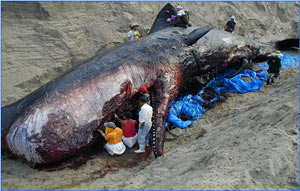
Figure 1 Collecting samples from a stranded whale.
現在、新たに工業生産される化学物質は、環境への負荷を抑えるため、毒性や残留性などのリスク評価に関する基準をクリアしていることは言うまでもない。ところが、実際は環境中で容易に分解されず生物に蓄積するものや、光分解や生物代謝を受けた結果、強い残留性・毒性を示す物質もある。本研究室は、「野生の高次生物に濃縮するような化学物質は、潜在的な環境負荷が懸念されるので、その製造・使用の妥当性を再評価しませんか」という考えに基づいて研究を進めている。具体的には、大気・水質・底泥・各栄養段階の野生生物など、あらゆる環境試料を採集し、それらに含まれる化学物質を測定して、汚染の現状・生物濃縮の態様・経年変化・環境挙動等の解析を行っている。

Figure 1 Collecting samples from a stranded whale.

Figure 2 Temporal trend of synthetic musk (HHCB) concentrations in marine mammals collected from Japanese coastal waters.
Over the past few decades, the occurrence of anthropogenic pollutants, such as dioxins and PCBs in the environment is of great concern due to their persistent and long-range transportable nature as well as toxic biological effects. In recent years, public concern about the environmental occurrence of pharmaceuticals and personal care products (PPCPs) has been increasing. However, little is known about the levels, behavior, and potential effects of PPCPs as well as their degradation products.
Based on these background, we have analyzed several persistent organic pollutants including PPCPs, such as antibiotics, synthetic musks, and UV filters in air, water, sediment and wildlife in the marine environment to understand their contamination, distribution, and fate in the ecosystems.